It’s my pleasure to welcome to the blog this morning debut novelist Carol Lovekin, whose book GHOSTBIRD was published yesterday by Honno Press. Carol has written a guest post, all about – what else? – being a writer.
Firstly, here’s the blurb for GHOSTBIRD:
‘Someone needs to be forgiven, someone needs to forgive.’
GHOSTBIRD concerns Cadi Hopkins, a fourteen-year-old girl who lives in a remote village in Wales. Cadi wants answers her emotionally distant mother, Violet refuses to disclose. Lonely and surrounded by ambiguity, she is determined to uncover the mystery surrounding the deaths of her father and her little sister, both of whom died before she was born.
Caught in the middle is Cadi’s aunt, Lili the witch woman.
In a world of hauntings and magic, in a small village where it rains every day throughout the month of August, the secrets and the ghosts are finally waking up, and none of the Hopkins women will be able to escape them.
If Lili won’t use her magic to make Violet talk, can Cadi conjure some of her own?
In GHOSTBIRD you will find sadness and love; a small ghost, a little knitting, a lot of birds and a good deal of rain. And the Welsh myth of Blodeuwedd – like the rain – is a thread running through the story.
And here’s some quotes about the book by other authors (including me):
‘Charming, quirky, magical’ Joanne Harris
‘Lovekin’s prose is full of beautifully strange poetry’ Rebecca Mascull
‘Drawing on nature, witchcraft, age-old fairytales and secrets… a powerful, spellbinding tale’ Judith Kinghorn
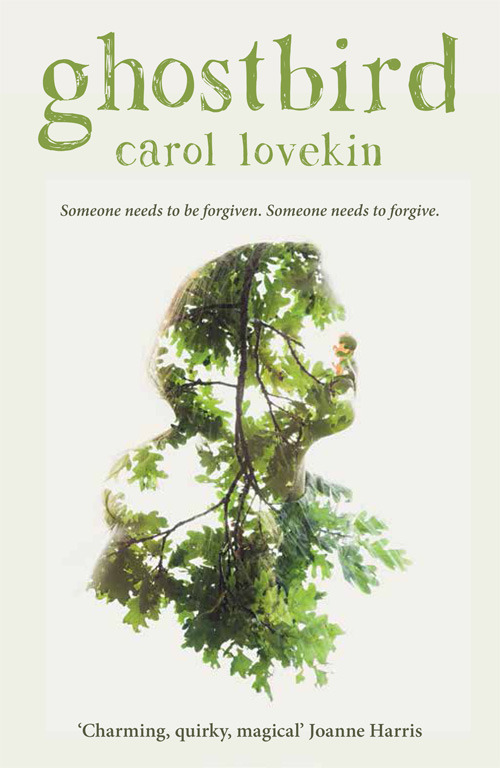
Being a
Writer
As an admirer of Virginia Woolf I might be forgiven for
trotting out the almost clichéd party-line: all a woman needs to write fiction
is money and a room of her own. Money aside, the reality for a good many women
in the 21st century is we are still making do with whatever space we
can lay claim to. This was my situation until ten years ago when I moved to a
flat with a spare room or, as I whispered to myself, a study. Since the day I
decided to write with a serious view to publication, it’s where I like to be.
Although I write all year round, autumn and winter are my
preferred seasons. I’m drawn to what I call ‘proper weather’ and the isolation at
the heart of winter. Gazing out of my window through the morning mist imagining
I’m on an island. The skies I look out on are endlessly changing. *interrupts – I like to write in winter too, preferably when it’s snowing. I ought to move to the Arctic, really…*

The view from Carol’s desk.
My writing day is fairly structured and divided into two
parts. I’m an early morning scribbler and create a good deal of my story scenes
in isolation, writing in bed by hand. For my birthday this year I was given the
most exquisite silk-covered notebook. The paper is handmade and perfect for
pencil, so for a while at least, the unlined artist’s sketchbooks I favour have
been abandoned. My notes are often random and resemble the workings of a
dyslexic spider. In them the vague ideas that come from ‘somewhere’ take shape.
Once I’m up and the chores are attended to, I settle at my computer, current notebook
in attendance.
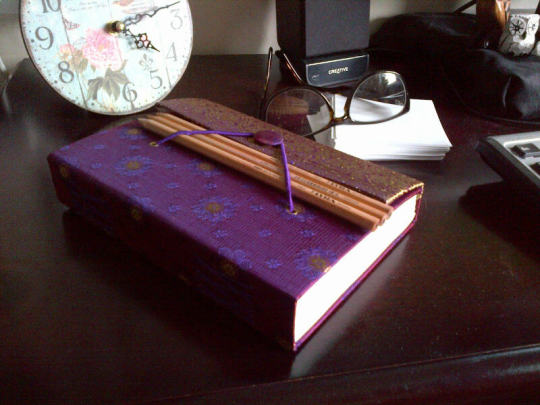
Carol’s birthday notebook.
Plotting is important to me. Before I type so much as a
single word of a new story I create a reasonably detailed outline. I like to know
as much as possible about my characters and to this end create comprehensive
profiles. Much of this information never sees the finished page but I agree
with the ‘rule’ that the more I know about my characters, the more authentic
they will appear to my reader.
As any writer will tell you, characters can and do develop
their own agendas and the nature of story means nothing is ever writ in stone.
But the idea that I might begin a story without some knowledge of where it was
going fills me with dismay. I don’t storyboard; I do make a lot of notes and
create a ‘chapters in précis’ file so I can make some sort of attempt to stay
in control. With my outline and character profiles in place, I set off,
scattering my breadcrumbs, listening for the word birds and hoping for the best
because, truth be told, I have no real idea where my story might take me.
I’m not a linear writer and never have been. Over time my
haphazard notebook scenes eventually find their way into the main narrative. As
the story emerges I enjoy discovering a random set-piece or a fractured
thought, knowing it will fit perfectly here or there. It’s an odd way to write
a book but it works for me. Before I let anyone read a single word, I need to
be on at least a second draft. Since I’m a committed ‘edit as I go’ kind of writer,
the state and stage of any draft is moot.
Other than rereading the myth of Blodeuwedd and checking some
minor details, my research for Ghostbird
centred largely round getting inside the head and mindset of a fourteen-year-old
girl. I still don’t know what led me to write a teenage main protagonist. I do
know, I woke up one morning and knew Cadi; knew what she looked like and the
essence of her story.
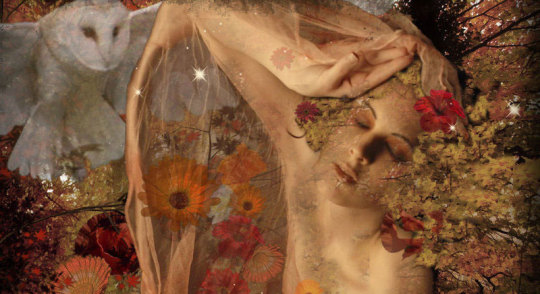
Blodeuwedd
Ghostbird’s
evolution has been a long one. When I moved to Wales in 1979 one of the first
things I did was to read The Mabinogion, a collection of Welsh prose myths
compiled in the 12th and 13th centuries from an earlier
oral tradition. I was particularly drawn to the story of Blodeuwedd: the woman
conjured from flowers by a man and a magician, for political ends. Although I
didn’t know it at the time, my reaction to this dark, compelling strand in the myth
was a foretelling of how Cadi would respond to it. When I read how Blodeuwedd
was cursed by being turned into an owl, it immediately struck me as ludicrous. If
she became a bird, Blodeuwedd could surely fly away, thwart the scheming of the
controlling men hell bent on punishing her, and escape.
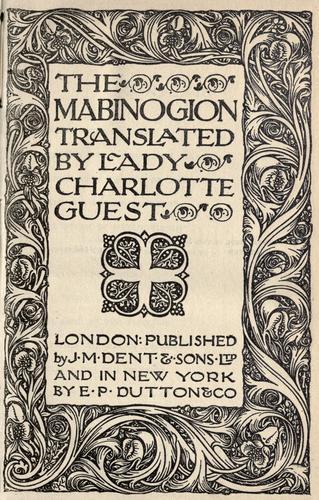
I put this thought away, wrote two dreadful novels and eventually
self-published another, marginally better one. It was many years before Blodeuwedd
re-emerged. When she did, I first rewrote her story from her point of view and
then I met Cadi: fully formed and clear-eyed, resolute and in complete
agreement with me. At this stage, I had no idea I was writing a ghost story.
Once I did, writing the ghost’s voice opened the door for Blodeuwedd’s. By then
I had become immersed in the magic of my adopted home.
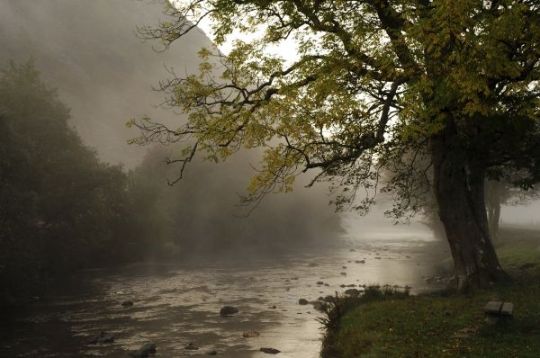
North Wales.
The landscape had begun
to inform my writing and the various threads of Ghostbird came together as if they had been waiting. Still unsure
if I had any real talent for writing, I made a conscious decision to take
myself seriously. I’d been living in a state of arrested development for long
enough. It was time to step into my personal prime and see what I was made of.
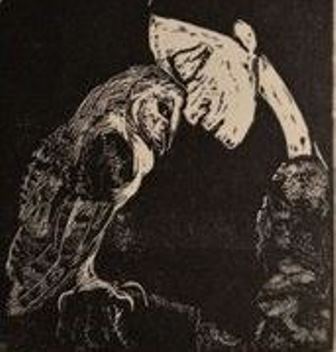
An inspiration for Cadi.
Throughout the process of bringing Ghostbird to publication I’ve been cared for and supported by the
team at Honno, the Welsh Women’s Press. The most important aspect of writing the
book has been my relationship with my editor, Janet Thomas. From the tentative
submission of the first fifty pages to the finished book, I’ve been guided by a
true teacher. Janet has enabled and encouraged me to discover my voice and her editorial
eye is every bit as bright as that of a barn owl.
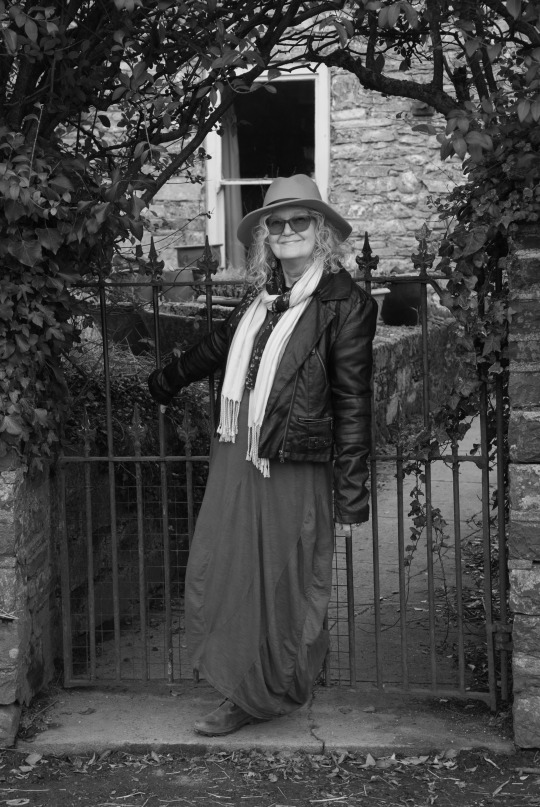
Carol Lovekin, photo by Janey Stevens.
Thanks to Carol for a super post, giving us an insight into her evolution as a writer and how her lovely book, GHOSTBIRD, came to be. Don’t miss the rest of her blog tour – catch the dates and sites below:
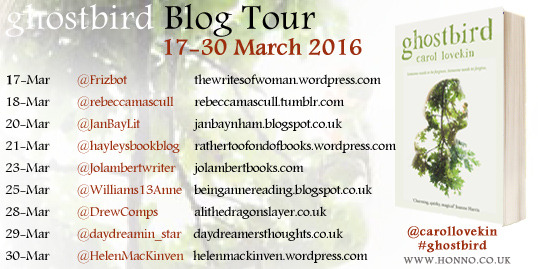
You can find Carol online here:
https://twitter.com/carollovekin